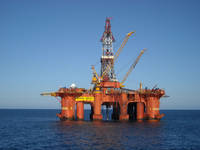Subsea gas compression has also been assessed on Gullfaks and for the Ormen Lange field together with operator Shell.
“Compressing gas on subsea installations represents a considerable technological leap for the industry,” says Margareth Øvrum, executive vice president for Technology & New Energy.
“With this technology in place, the recovery factor and producing life can be substantially increased for a number of gas fields.”
Preparations for seabed compression have come furthest on Åsgard, where the Midgard and Mikkel gas deposits are tied back to the Åsgard B platform.
These two reservoirs have been developed with seabed installations, and their wellstreams are piped to the gas production floater about 40-50 kilometres away.
Margareth Øvrum (left), executive vice president for Technology & New Energy, and Ståle Tungesvik, head of reserves and business development in Statoil, at a press conference in Oslo, 9 November.
Analyses show that pressure in Midgard and Mikkel will become too low to sustain their ability to produce to the B platform towards the end of 2014.
“Installing compressors will sustain the gas flow and ensure a long producing life for the platform,” explains Ståle Tungesvik, head of reserves and business development in Statoil.
“This makes it possible to recover large volumes – we’re adding 28 billion cubic metres of gas and 14 million barrels of condensate after a possible investment decision.”
The latter is due to be reached in the first quarter of 2011.
The alternative to subsea compression on Åsgard would be to build a new platform with conventional surface compressors.
Detailed assessments underlie the decision by Statoil and its partners, and these show that the chosen option represents the best concept in commercial terms.
“Moving compression to the seabed gives both improved energy efficiency and lower costs compared with keeping it on a platform or on land,” explains Øvrum.
“The closer to the well we compress the gas, the higher the efficiency and the production rates.”
Developing subsea gas compression also opens exciting prospects for the supplies industry, and the work is being followed with great interest by Norwegian and foreign technology companies.
Partners at the Åsgard field: Petoro AS (35.69 per cent), Statoil (operator, 34.57 per cent), Eni Norge AS (14.82 per cent), Total E&P Norge AS (7.68 per cent) and Mobil Development Norway (7.24 per cent).
20 Декабря 2025 | суббота | 15:56


